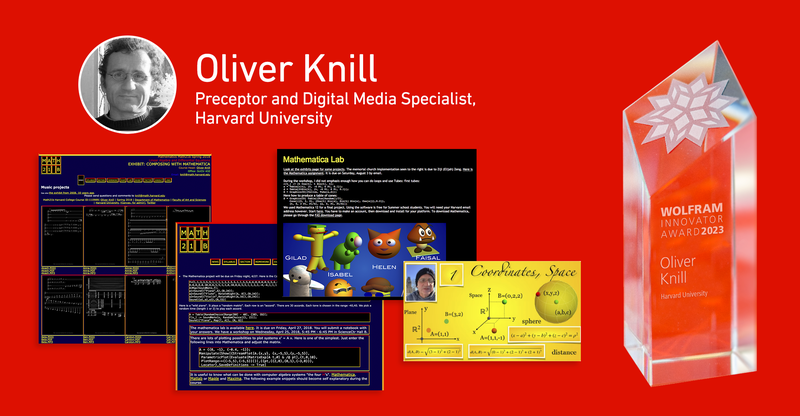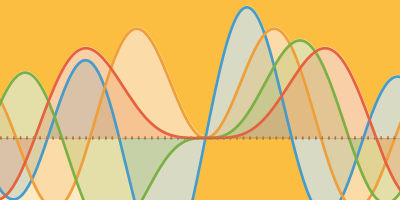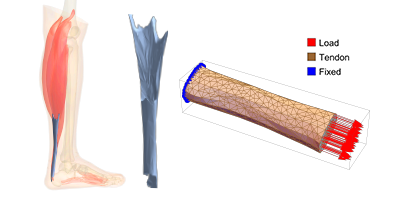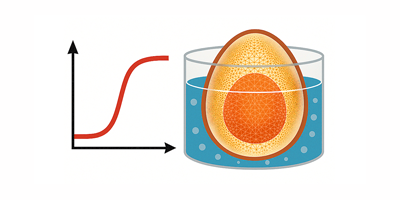Announcing the 2023 Wolfram Innovator Award Winners

Around the world, experts in computational intelligence have worked to push boundaries in the Wolfram technology stack in unique applications across different fields and disciplines. These leaders are recognized with the Wolfram Innovator Award at the Wolfram Technology Conference.
We are pleased to introduce and congratulate the 2023 Wolfram Innovator Award winners.
Alexandre Leite
Engineering Director & Mechatronics, Austral Dynamics

Alexandre Leite is a case of a PhD who became an entrepreneur. He currently holds a master’s and PhD in engineering and space technologies from Instituto Nacional de Pesquisas Espaciais and a degree in technology in automation from Instituto Federal Fluminense. He is experienced in the design of feasible mechatronic systems for several industry sectors and proportional–integral–derivative (PID) controllers.
He is a cofounder of Austral Dynamics, which started in 2017 as a spinoff of MWF Services. Austral developed its own hardware-in-the-loop platform called ASTURIAN. This technology allows engineers to use Functional Mock-up Unit (FMU) models generated by Wolfram System Modeler as real-time simulation mock-ups. Some applications are in agriculture machinery and commercial/heavy-duty vehicles. Currently, Austral is developing many business and technological initiatives in the field of electric powertrains for heavy vehicles.
Australian Christian College
Accepted by: Jeremy Kwok, Director of Technology

Australian Christian College (ACC) is Australia’s largest non-government distance education provider, with four schools equipped to provide a hybrid of in-house and fully remote learning. Covering K–12 education, its mission is to have all students flourish to their full potential and be a positive influence on the world. Rather than rely on traditional publishers, ACC wanted more consistent content for online and in-person assessment that showcases the ingenuity of their instructors.
ACC is now rolling out a Wolfram eLearning environment integration in their current Canvas environment. This integration will initially be used for assessments with 1,500 high-school students, which will quickly grow to 3,000 students and beyond as they implement the system for grades 7–12. With ACC’s announcement of a new STEM-focused campus in Western Sydney, this automated assessment system will be even more important in the future as enrollment continues to grow.
J. William Helton
Professor Emeritus of Mathematics, University of California San Diego

J. William Helton’s group developed the package NCAlgebra for doing general-purpose noncommutative algebra in Mathematica. It began around 1990 and has been extended continually since then. From his work at the origins of noncommutative geometry and H-infinity control, Helton kept seeing such noncommutative formulas and hoping computer algebra could help. So, with Bob Miller, he started NCAlgebra and developed algorithms to find out. Around the year 2000, linear control theory shifted away from equalities to inequalities, e.g. from Riccati equations to linear matrix inequalities. This motivated Helton and a few others to begin what has developed into an elegant theory of noncommutative inequalities, to wit, a noncommutative version of real algebraic geometry. NCAlgebra seriously accelerated (and was accelerated by) this development.
A booming area full of noncommutative algebra is quantum information theory, and that is the main direction of current NCAlgebra development. Major contributions to NCAlgebra are being made by Mauricio de Oliveira and have also come from Mark Stankus and from many University of California San Diego students.
Esma Gel
Cynthia Hardin Milligan Chair of Business and Professor of Supply Chain Management and Analytics, College of Business, University of Nebraska–Lincoln

In her previous role as an associate professor in the School of Computing, Informatics, and Decision Systems Engineering at Arizona State University, Esma Gel used Mathematica for a system dynamics model related to the spread of COVID-19.
Gel’s team, ASU METAz, helped guide the Arizona Department of Health Services by supplying predicted outcomes to various “what if?” policy questions. The team periodically released accurate projections for cases, hospitalizations and deaths in Arizona for more than 15 months, often being featured in mainstream media outlets.
Márcio Rosa
Professor of Mathematics, IMECC-UNICAMP

For 20 years, Márcio Rosa has been making pedagogical innovations on the principle that university students should be using software, including the Wolfram Cloud, to continue their education in higher mathematics. He believes students should be trained to use software as a tool to aid their endeavors rather than learning to replicate the software’s functions. The geometric approach is reinforced so that the student, when studying and solving problems, is able to produce images with software and interpret them. Rosa has published various articles and supervised theses based on his experience and unique approach to mathematics education.
Mark Rawlins
Executive Chairperson and Chief Engineer, Energy and Combustion Services

Energy and Combustion Services offers global energy management analytics and autonomous measurement systems for large-scale mining and industrial manufacturing. Mark Rawlins is a professional engineer (mechanical), certified energy manager, and measurement and verification professional. He specializes in energy system modeling for efficiency and productivity, using digital twins to simulate and support new designs. His primary goal is aiding companies in transitioning to net-zero carbon emissions while maintaining efficiency. He also develops advanced metering systems that provide insights into energy and process deviations, some operating autonomously.
Wolfram Language is foundational to his R&D work, which includes a road condition monitoring system that marries vision-based road defect detection and location with vehicle dynamics and vibration signal processing using edge computation to report road and safety conditions autonomously. Separate devices can communicate and accept instructions from each other for extended inspections.
Martijn Froeling
Assistant Professor, University Medical Center Utrecht

Martijn Froeling is an assistant professor specializing in quantitative neuromuscular magnetic resonance imaging (MRI) at the University Medical Center Utrecht. His work revolves around enhancing MRI techniques to better understand muscle function and diseases.
MRI scans provide valuable data, but they need careful processing and analysis. That’s where Froeling’s QMRITools paclet comes in. The paclet is a handy toolkit for experimental design, data analysis and teaching. Since its launch in 2012, it has been used in over 50 scientific papers. Originally created to analyze muscle diffusion-weighted imaging data, QMRITools has expanded its scope. It now includes features like cardiac analysis (including tagging and T1 mapping), Dixon reconstruction, EPG modeling and fitting, J-coupling simulations and more.
The paclet currently offers over 450 custom functions, making it a valuable resource for researchers. Plus, there’s extensive documentation with more than 750 pages, and each toolbox comes with demonstrations. With these tools, Froeling aims to simplify quantitative MRI analysis, benefiting our understanding of muscle injury and disease.
Oliver Knill
Preceptor and Digital Media Specialist, Harvard University

Mathematica is vital to Oliver Knill’s teaching and research. In teaching, it produces professional graphics for handouts, facilitates visualizations and animations, and serves as a platform for innovative student projects. It’s also essential for vetting assignments and examples, enabling a quick search for appropriate problems for both homework and exams. Knill has employed it to design 3D printable objects, generate high-resolution animations and illustrate musical concepts like Markov chain–generated music.
In his research, Knill’s primary laboratory is Mathematica. Currently, he is delving deeper into discrete geometry, probability, spectral theory and linear algebra. He is thrilled about uncovering previously undiscovered relationships and enhancing proofs with code. This allows any curious individual to explore the underlying structure. Mathematica code is close to natural language, acting as a runnable pseudocode. While examples can elucidate a theorem, providing code that showcases it using random structures is not only thrilling but also validates the result’s efficacy.
Patrick Scheibe
Research Scientist, Max Planck Institute for Human Cognitive and Brain Sciences

Patrick Scheibe boasts a dynamic and illustrious career journey in academia and industry. He spent over a decade at Leipzig University, where he played a pivotal role in leading an image and data processing unit, enabling researchers to quantify medical and biological experiments easily. During his PhD studies, he took a deep dive into the intricacies of the human fovea, extensively utilizing Wolfram Language to model and quantify this crucial eye region from optical coherence tomography scans. Subsequently, Patrick’s expertise took him to the neurophysics department at the Max Planck Institute for Human Cognitive and Brain Sciences, where he continues to work on data processing for quantitative MRIs.
Patrick is a highly versatile professional with a wide range of expertise beyond academia. He has worked as a consultant using Mathematica on various projects focused on simulations, modeling and data analyses in diverse domains for companies like Daimler, Procter & Gamble and Dow Chemical. Patrick has been developing and maintaining the Wolfram Language integration for JetBrains IDEs since 2012. His exceptional skills and expertise have led him to join the IntelliJ Platform SDK team at JetBrains. In addition, Patrick has developed several syntax highlighters for Wolfram Language, one of which has been used on the official Mathematica Stack Exchange site, where he is an enthusiastic moderator and member.
Peter Taborek
Professor of Physics and Astronomy, University of California, Irvine

Peter Taborek’s research is in experimental condensed matter physics, and he teaches mathematical methods for the physical sciences to undergraduate and graduate students in physics, chemistry and engineering. Most of the standard textbooks for this subject were written before the era of personal computers and do not equip students with the tools of modern technical problem solving. To remedy this situation, Taborek has developed his own e-textbook, MathematicaHandbook, which is written entirely in Wolfram Notebooks.
The text covers traditional topics, such as complex analysis, linear algebra and ordinary and partial differential equations, but explains and illustrates concepts using computer algebra, graphics and numerics. This text has been used for over a decade and includes many figures, animations and live code so students can perform computations while learning course concepts. Student learning requires numerous practice problems with grading and feedback. For a large undergraduate class, this is labor-intensive, so Taborek has developed a web-based platform to deliver homework problems, which are graded using calls to Wolfram Cloud APIs.
Picket Pharmaceuticals, Inc.
Accepted by: Joshua Kriger and Lauren Williams

The foundation of Picket Pharmaceuticals, Inc.’s approach is to first acquire, then integrate, large healthcare datasets—such as shortage data, manufacturing information, unit usage, pricing, price variation and many more—that capture the universe of healthcare interactions that surround each patient’s walk from diagnosis to completion of care through their piece of the healthcare system.
Using the Wolfram technology stack, Picket has conducted interesting work with insights on the points of failure and where inefficient markets exist in the supply chain. Of note, computation techniques used include projecting large amounts of healthcare supply and medication usage data into images. These images become the data fed to repurposed visual neural net training procedures that result in AI/machine learning models that are able to accurately recognize signals that predict future drug shortages.
Working with Wolfram’s Consulting Group, Picket has also verified a derived new class of economic measures, titled the Sutherland measures, made feasible by taking into account special economic qualities and situations of supplied medicines for the generic drug markets.
Sander Huisman
Professor, Physics of Fluids, University of Twente

Sander Huisman has been using Mathematica since 2003 for the processing of all his data, creating figures and visualizations and doing complicated fits and optimizations. Furthermore, he uses Mathematica’s interactive capabilities to generate illustrative examples in his fluid mechanics classes. He also uses it recreationally for the production of generated art for the yearly GENUARY event. He is also a contributor to the Wolfram Function Repository, having created over one hundred functions.
Sandipan Bandyopadhyay
Associate Professor, IIT Madras

Sandipan Bandyopadhyay is an educator and researcher in the fields of mechanisms and robotics. He specializes in theoretical and computational kinematics, in particular in the domain of spatial parallel manipulators, such as the Stewart platform.
Bandyopadhyay’s research involves highly demanding symbolic computations, for which he finds a trusted partner in Mathematica. In at least 20 of his journal publications, the symbolic capabilities of Mathematica have played a significant role. Moreover, the flexibility of Wolfram Language has allowed him to develop algorithms and modules to explore deeper into algebraic geometry and kinematics and create customized tools for analyzing problems using hyper-complex numbers, such as dual numbers and dual quaternions. He uses the dynamic visualization capabilities of Mathematica to bring virtual robots to life, enabling his students to manipulate them and develop a better understanding of complicated motions of constrained multibody systems.
Thomas R. H. Tibbles
Head of International Equities, Madison Investments

Tom Tibbles and his team have focused for decades on implementing a well-tested and successful investment strategy to invest portfolios of international stocks. Over the last few years, he has led the team to embrace the Wolfram technology stack to make the process explicit in software and to enhance, accelerate and improve the quality and consistency of the workflow.
Financial data can be sliced cross-sectionally, through time or simultaneously by both curating and provisioning processed data in multidimensional matrix structures—“DataCubes.” Doing so has made it highly efficient to execute the desired types of data manipulations and visualizations in Mathematica.
The project pipeline began by writing custom APIs to extract data locked in silos; legacy procedures were then translated and separated into hundreds of “CustomMetrics” to clean and increase the information content of individual data segments. After the release of Mathematica 12, the project expanded to take advantage of the entity store data framework.
Additional projects have focused, within a Wolfram Language package, on automating the integration and enhancement of data and sequencing the workflow steps across multiple internal and external data sources and applications. Lastly, user experience was vastly improved with the custom development of a GUI to access, examine further and manipulate data while dynamically displaying the visual reports.
Tyson Jones and Simon Benjamin
Tyson Jones, Postdoctoral Researcher, University of Oxford

Tyson Jones is a postdoctoral researcher at the University of Oxford, studying first-generation quantum computers and their simulation via high-performance classical computing in the areas of quantum computing, high-performance computing, scientific simulation and software development. He is also a senior quantum software engineer at Quantum Motion Technologies and a consultant for the UK’s National Quantum Computing Centre.
Jones’s doctoral work included the creation of QuESTlink, an open-source WSTP-powered package for simulating quantum computers, integrating the QuEST project’s hardware-accelerated numerics with Mathematica’s powerful symbolic engine. QuESTlink combines a plethora of Wolfram facilities, novel algorithms and high-performance computing techniques behind an intuitive API, enabling research-frontier computation through only a few lines of code.
Simon Benjamin, Professor of Quantum Technologies, University of Oxford
Simon Benjamin , principal investigator (PI), is a professor of quantum technologies with the Materials Department at the University of Oxford. He leads a group of 17 applied theorists who look at diverse aspects of quantum computing, including architectures, fault tolerance and algorithms that are robust against hardware imperfections. His team created QuEST, a world-leading tool for classical emulation of quantum devices.
Congratulations to these winners for their dedication to the pursuit of computational intelligence.



Congratulations to all the winners of the 2023 Wolfram Innovator Award! Your dedication, creativity, and hard work have not only earned you this prestigious recognition but also made a significant impact in your respective fields. Your ability to think innovatively and apply complex concepts in practical ways is truly inspiring. As someone who greatly admires individuals who commit themselves to their passions and generously share their knowledge with the world, I am deeply impressed by your achievements. Your contributions are not just advancements in your areas of expertise, but they also serve as beacons of inspiration for others to follow. Keep up the incredible work, and thank you for setting such a remarkable example for us all.